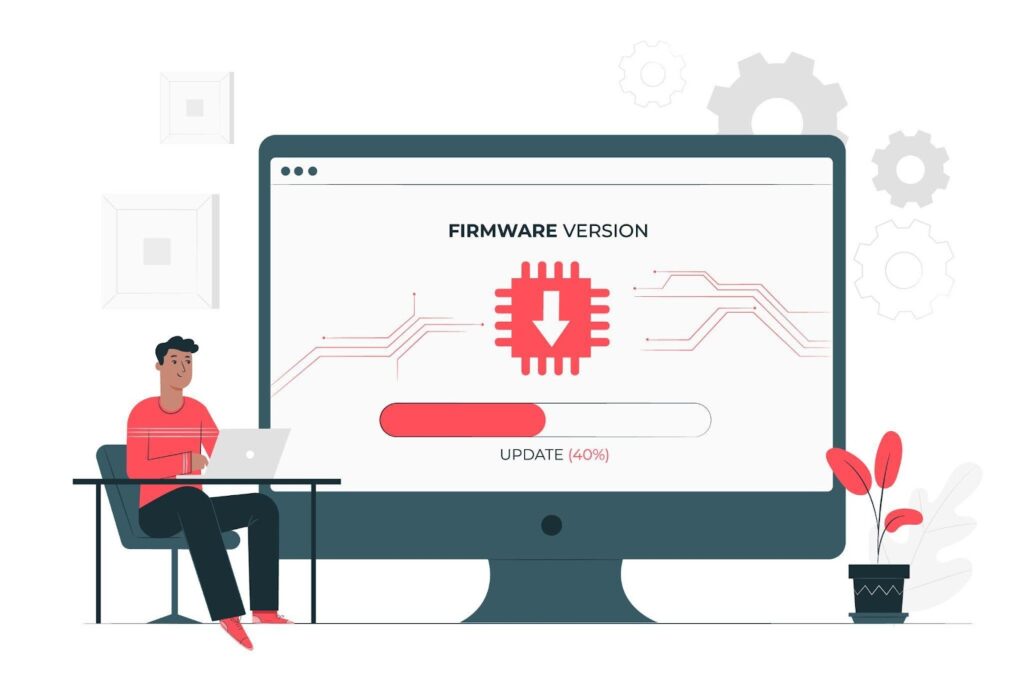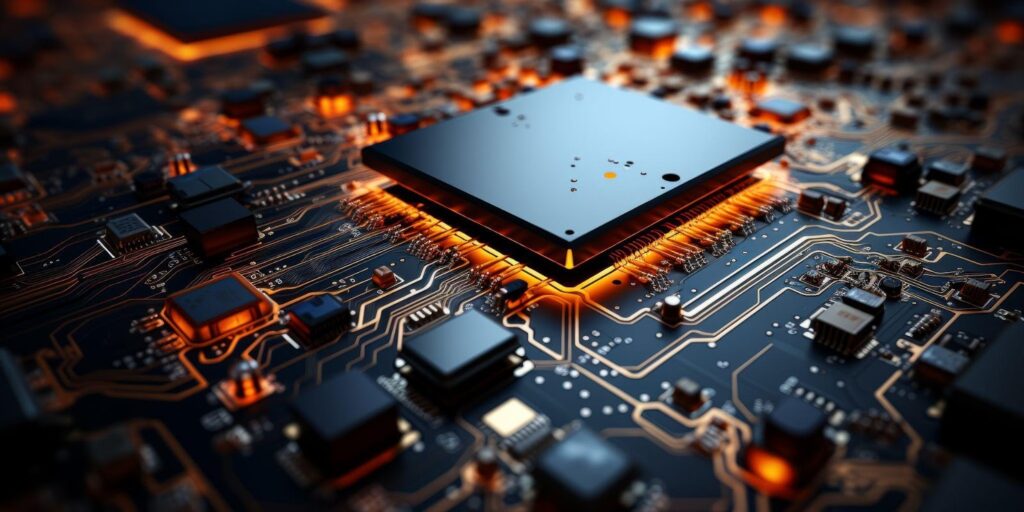What Is Firmware?
Firmware is a specialized type of software that provides the low-level control for a device’s specific hardware. Unlike standard software applications that run on an operating system (OS), firmware is embedded directly into the hardware of devices, such as smartphones, appliances, and industrial machines. It acts as an intermediary between the hardware and other software, ensuring proper functionality, communication, and performance. The choice of firmware architecture plays a crucial role in the effectiveness and reliability of a device, making it essential to select an appropriate architecture for any development project.
Components of Firmware Architecture

Selecting the right firmware architecture involves understanding the key components that make it up. Here, we will explore the fundamental elements of firmware architecture that can influence your decision-making process:
1. Operating System (OS)
The operating system is a critical component of firmware architecture. It provides the necessary environment for executing application code, managing hardware resources, and ensuring user interfaces. When choosing an OS for firmware, consider factors such as:
– Real-Time Requirements:
Does the application require real-time processing?
– Resource Constraints: What are the memory and processing limitations of the hardware?
– Compatibility:
Is the OS compatible with existing hardware and software ecosystems?
Selecting an appropriate OS can ensure that the firmware operates efficiently and reliably.
2. Kernel
The kernel is the core part of the operating system that manages communication between hardware and software. It is responsible for tasks such as process management, memory management, and device management. When evaluating the kernel as part of your firmware architecture, consider:
– Performance Requirements:
Does the application require high performance in multitasking?
– Scalability:
Can the kernel accommodate future hardware upgrades or changes in system complexity?
– Stability:
Does the kernel have a track record of stability and reliability?
A strong kernel can significantly affect the overall performance and efficiency of the firmware.
3. Device Drivers
Device drivers are specialized software components that allow the operating system and applications to communicate with hardware peripherals. In firmware architecture, the choice of device drivers is vital for ensuring proper functioning of all hardware components. Key considerations include:
– Support for Hardware:
Are drivers available for all required hardware components?
– Driver Complexity:
Is the driver easy to implement and maintain?
– Updates and Patches:
Are there mechanisms in place for updating drivers to ensure compatibility with new hardware?
Choosing the right combination of device drivers is critical for operational integrity and functionality.
4. Chipset

The chipset serves as the communication bridge between the processor and the other components of the system. Its selection is crucial as it affects performance, power consumption, and compatibility with various peripherals. Evaluating a chipset involves:
– Processing Power:
Does the chipset provide sufficient processing capabilities for your application?
– Energy Efficiency:
How does the chipset perform in terms of energy consumption?
– Future-Proofing:
Is the chipset adaptable to future hardware advancements?
A well-chosen chipset can provide an excellent foundation for your firmware architecture.
5. BIOS
The Basic Input/Output System (BIOS) is firmware stored on a chip on the motherboard that initializes hardware during the booting process. It is critical for system stability and performance. When choosing a BIOS for firmware architecture, consider:
– Customizability:
Can you modify the BIOS to meet specific application needs?
– Legacy Support:
Does it support older hardware that is still in use?
– Security Features:
Are there built-in security features to protect against threats?
A robust BIOS can enhance device performance and security.
6. Application Code
Finally, the application code is the programming that implements specific functionalities of the device. When choosing how to structure application code within the firmware architecture, think about:
– Coding Standards:
Are there established best practices and coding standards to follow?
– Modularity:
Is the application code modular, allowing for easier updates and maintenance?
– Testability:
Can the code be easily tested for bugs and vulnerabilities?
A well-structured application code will contribute significantly to the overall stability and functionality of the firmware.
What is Firmware Architecture?
Firmware architecture refers to the structural design and organization of the firmware that governs how various components interact and function together. It encompasses the selection and integration of operating systems, kernels, device drivers, chipsets, BIOS, and application code.
The right firmware architecture will ensure optimal performance, reliability, and scalability, making it essential to carefully evaluate these components based on project needs and constraints.
Firmware provides the low-level control for a device’s specific hardware, acting as the intermediary between the hardware and higher-level software applications. Here are key components and concepts associated with firmware architecture:
Layered Architecture:
Firmware is often structured in layers, where each layer has specific responsibilities. Common layers include:
-Hardware Abstraction Layer (HAL):
Interacts directly with hardware components, providing an interface for higher layers.
– Driver Layer:
Manages communication with specific hardware devices (e.g., sensors, motors).
– Middleware:
Offers services and functionalities that assist higher-level applications, like data management and communication protocols.
-Application Layer:
Contains firmware specific to the device’s functions and features.
Modularity:
This involves breaking down firmware into discrete, interchangeable components or modules. This allows for easier updates, maintenance, and development, as individual modules can be modified without affecting the entire system.
Real-Time Operating System (RTOS):
Many firmware architectures use RTOS to manage time-critical tasks and maintain efficient operation. RTOS ensures that high-priority tasks receive the necessary CPU time.
Memory Management:
Firmware needs to efficiently manage memory, including RAM for runtime data and non-volatile memory (e.g., flash memory) for persistent storage.
Concurrency:
Handling multiple tasks simultaneously is often essential, especially in embedded systems. Firmware architecture may incorporate threading or interrupt handling to manage this.
Hardware-Specific Interfaces:
Firmware must account for the different communication protocols and interfaces the hardware supports, including SPI, I2C, UART, etc.
Development Tools and Environment:
Firmware architecture involves the integration of tools for development, debugging, and testing, such as Integrated Development Environments (IDEs), compilers, and debuggers.
Versioning and Updates:
An important aspect is how firmware is updated, ensuring that new features or bug fixes can be deployed without needing to replace hardware.
Security:
Firmware architecture must integrate security measures to protect against vulnerabilities, unauthorized access, and data integrity.
Each firmware architecture can vary significantly between different devices and applications, tailored to meet specific requirements such as performance, power consumption, size, and complexity.
How to Choose the Right Firmware Architecture?
Choosing the right firmware architecture for a project is critical for ensuring that the firmware meets both functional requirements and performance expectations. Here are key considerations to guide the selection process:
1. Understand the Requirements:
– Functionality:
Define the core functions the firmware must support. Determine if these are basic or complex functionalities.
– Performance:
Assess the speed requirements and real-time constraints, especially if the system manages time-critical operations.
2. Target Hardware:
– Resource Constraints:
Evaluate the target hardware’s processing power, memory availability, and power consumption limits. This will influence the complexity of the firmware architecture.
– Peripheral Support:
Identify the interfaces and peripherals the firmware needs to support, such as sensors, motors, or communication modules.
3. Development Team Expertise:
– Skill Set:
Consider the expertise of the development team. An architecture that aligns with the team’s skills can lead to more efficient development and fewer errors.
– Familiarity:
If the team has prior experience with specific architectures or tools, leveraging that can accelerate the development process.
4. Modularity and Maintainability:
– Modular Design:
Opt for an architecture that allows for modular components. This facilitates easier testing, debugging, and updates.
– Future Enhancements:
Consider how easily new features can be added in the future. An architecture that supports extensibility will be beneficial.
5. Development Environment and Tools:
-Toolchain Compatibility:
Ensure that the selected architecture is compatible with development tools, IDEs, and debugging resources.
– Build and Integration Systems:
Look for architectures that support version control and continuous integration, helping streamline the development process.
6. Security Requirements:
– Vulnerabilities:
Evaluate the potential security vulnerabilities and regulatory compliance required for the application. Consider incorporating secure coding practices within the architecture design.
7. Cost Considerations:
– Budget:
Assess the cost implications of varying architectures, including development time and resource requirements.
– Long-term Support:
Evaluate the total cost of ownership, including long-term maintenance and updates.
Conclusion
Choosing the right firmware architecture is a multifaceted decision that balances functionality, performance, team expertise, and budget constraints. By thoroughly understanding the requirements and constraints of the project, and considering factors such as hardware capabilities, modularity, security, and the development environment, teams can select an architecture that not only fulfills current needs but also positions them for future refinements and innovations. Ultimately, the right choice will lead to a more efficient development process, increased maintainability, and a successful end product that meets user expectations and operational demands.
